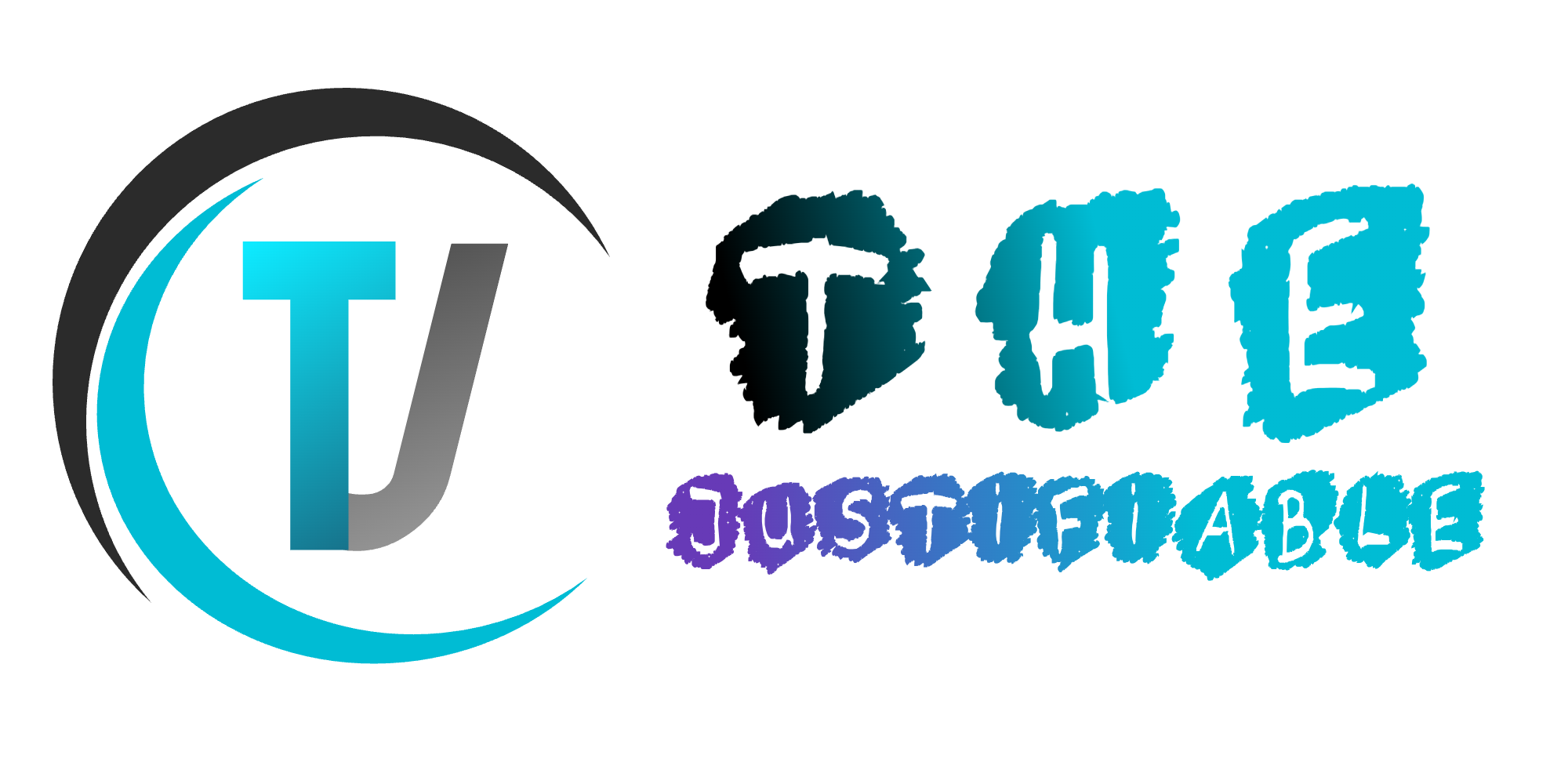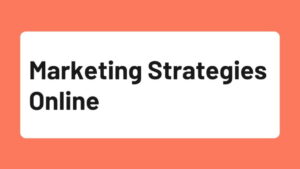Table of Contents
If you’ve ever wondered, “How can I make my money work for me instead of the other way around?” you’re not alone.
Saving is important, but letting money just sit in a bank account won’t help it grow. Should you invest in stocks, real estate, or retirement accounts? How do you balance risks with rewards?
This guide will break down proven strategies that can help you make smarter financial moves and put your money to work in ways that build lasting wealth.
Start With Building A Strong Financial Foundation
Before you can make your money work for you, you need a solid foundation. Think of it like building a house—if the base isn’t stable, anything you stack on top will eventually crumble.
A financial foundation is about managing today wisely so your future wealth can grow without unnecessary stress.
Create A Budget That Supports Growth Goals
A budget isn’t about restricting yourself; it’s about giving every dollar a purpose. I always recommend starting by tracking your spending for at least 30 days.
Use a tool like Mint or YNAB (You Need A Budget) to categorize your expenses automatically. When you see the numbers laid out, it’s easier to spot leaks—like $200 quietly slipping away each month on food delivery.
Once you know where your money goes, shift your budget toward growth. Instead of just balancing bills and wants, set aside specific percentages: maybe 50% needs, 30% wants, 20% saving and investing. That last slice is what turns your budget into a growth engine.
Pro tip: Automate transfers to a savings or investment account on payday. If you never see the money in your checking account, you won’t miss it.
Pay Off High-Interest Debt Before Investing
Imagine trying to fill a bucket that has a big hole at the bottom. That’s what investing looks like if you’re still carrying credit card debt at 20% interest. You’ll rarely outpace that drain with investment returns.
Here’s how I suggest tackling it:
- List all your debts, starting with balances, interest rates, and minimum payments.
- Focus on the highest interest debt first (the avalanche method).
- Keep making minimum payments on everything else while throwing extra cash at the costliest one.
It might feel slow at first, but once you pay off that first big debt, momentum builds. Not only are you saving money on interest, you’re also freeing up cash flow that can now be redirected into investments.
I believe the peace of mind from being debt-free is itself a form of wealth—it makes every financial decision after that less stressful.
Build An Emergency Fund For Stability
Life doesn’t always follow the script. A job layoff, medical bill, or car repair can throw everything off track if you don’t have a cushion. That’s why an emergency fund is like insurance for your financial plan.
I usually suggest aiming for 3–6 months of living expenses. If that feels overwhelming, start smaller: set aside $500 or $1,000 as a mini-fund, then keep building. Put it in a high-yield savings account—accessible but separate from your checking so you’re not tempted to dip into it for non-emergencies.
A good way to frame it: an emergency fund doesn’t grow wealth directly, but it protects your investments from being raided in tough times. It buys you confidence to take smart risks later.
Grow Wealth Through Smart Investing Choices
Once your foundation is strong, this is where the exciting part begins—making your money multiply.
Investing is not about gambling; it’s about putting your dollars to work in assets that appreciate or pay you back over time.
Use Index Funds For Low-Cost, Long-Term Growth
If you’ve ever felt intimidated by stock picking, index funds are your best friend. They pool together a wide range of companies, letting you invest in the entire market rather than betting on one stock.
The S&P 500 index, for example, represents the 500 largest U.S. companies—and historically, it’s delivered around 10% average annual returns.
Why do I like index funds so much? Two words: low fees. Actively managed funds often charge 1% or more in fees, while index funds like Vanguard’s VOO or Fidelity’s FXAIX charge as little as 0.03%. That difference compounds massively over decades.
A small illustration: if you invested $10,000 and earned 8% annually, with a 1% fee you’d have $169,000 after 40 years. Without that fee, you’d have $217,000. That’s $48,000 gone just to fees.
Explore Dividend Stocks For Passive Income
Dividend stocks are companies that share part of their profits with shareholders, usually quarterly. Think Coca-Cola, Johnson & Johnson, or Procter & Gamble—brands that generate consistent cash and reward you with a slice.
The beauty of dividends is the passive income stream. If you owned $100,000 worth of dividend stocks yielding 4%, you’d make $4,000 per year without selling a share. Reinvesting those dividends compounds your returns even further.
I recommend starting with dividend ETFs (exchange-traded funds) like SCHD (Schwab U.S. Dividend Equity ETF), which spreads risk across dozens of reliable dividend payers. That way, you’re not relying on one company to keep delivering.
Consider Real Estate As A Tangible Asset Strategy
Real estate is appealing because it’s physical—you can see and touch it. Rental properties can generate monthly income, while property value often appreciates over time.
For example, a $200,000 rental that generates $1,500 in monthly rent ($18,000 annually) can deliver strong cash flow once expenses and mortgage are managed. And unlike stocks, real estate allows you to leverage—using borrowed money to grow your asset base.
That said, real estate requires active management. You’ll deal with tenants, maintenance, and sometimes headaches. A simpler way in is through REITs (Real Estate Investment Trusts), which let you invest in real estate through the stock market without owning property directly.
Understand The Risk-Reward Balance In Investing
This is where mindset plays a huge role. Every investment has a trade-off: the safer it feels, the lower the return. A savings account is ultra-safe but barely outpaces inflation. Stocks carry volatility but offer much higher returns over decades.
The key is aligning your portfolio with your time horizon and comfort level. If you’re young, you can ride out volatility with a heavier stock allocation. If retirement is close, you might prefer more bonds or dividend-paying assets to stabilize income.
I always think of risk like a thermostat—you adjust it based on your life stage and financial comfort, not based on emotions in the moment.
Make Retirement Accounts Work Harder For You
Retirement accounts are one of the smartest ways to make your money work for you because they combine tax advantages with long-term growth.
The trick is knowing how to squeeze the most out of them, so you’re not leaving free money on the table.
Maximize Employer 401(k) Contributions
If your job offers a 401(k) with an employer match, take advantage of it. That match is essentially free money—it’s like a guaranteed return on your contributions.
For example, if your company matches 50% of what you put in up to 6% of your salary, and you earn $60,000, that’s $1,800 in free money each year if you contribute at least $3,600.
From your HR portal, it usually takes just a few clicks:
- Go to Benefits > 401(k) > Contribution Rate
- Set your contribution to at least the percentage that gets the full match
- Check whether you’re contributing pre-tax (traditional) or after-tax (Roth)
I recommend starting at the match minimum, then slowly increasing 1–2% each year. You’ll barely notice the difference in your paycheck, but over time your balance grows significantly.
Use IRAs To Expand Your Retirement Strategy
An IRA (Individual Retirement Account) lets you add another layer to your retirement savings. Traditional IRAs give you tax breaks now, while Roth IRAs let you pay taxes up front and withdraw tax-free later.
Here’s why I like Roth IRAs: if you’re young and expect your income (and tax bracket) to rise, paying taxes now could save you big later. Plus, you can withdraw contributions (not earnings) penalty-free, which gives you more flexibility than most retirement accounts.
You can open an IRA through platforms like Fidelity, Vanguard, or Charles Schwab. From the dashboard, the process usually looks like:
- Click “Open an Account”
- Choose “Roth IRA” or “Traditional IRA”
- Set up recurring transfers from your bank account
Contribution limits change yearly, but in 2025 it’s $7,000 (or $8,000 if you’re 50+). Don’t underestimate those limits; consistent contributions add up faster than most people realize.
Automate Contributions For Consistent Growth
The real power of retirement accounts isn’t just the tax advantages—it’s consistency. Automating your contributions makes saving effortless.
If you contribute $500 monthly into a retirement account with an average 7% annual return, you’ll have around $600,000 after 30 years. And that’s not you actively managing anything—that’s your money quietly working behind the scenes.
I advise linking your retirement account directly to your paycheck or bank account. Set it, forget it, and let compounding do its job. The best part is, automation keeps you disciplined even when markets look shaky, so you don’t miss out on long-term gains.
Build Multiple Streams Of Passive Income
One income stream, even a good one, can be fragile. Passive income is about creating backup engines that keep producing money whether you’re working or not.
Some streams take time and effort to set up, but once built, they give you freedom and flexibility.
Generate Rental Income From Real Estate Investments
Real estate can provide two things: appreciation over time and steady rental income. If you buy a property for $250,000 and rent it for $1,800 a month, that’s $21,600 annually before expenses.
Even after accounting for mortgage payments, maintenance, and taxes, many investors still net several hundred dollars a month.
What I’ve seen work well is treating rental properties like a business. Use tools like Buildium to manage tenants, collect rent online, and track expenses. That way, your rental income becomes less of a headache and more of a system.
If buying a property feels out of reach, consider starting with REITs (Real Estate Investment Trusts). These are traded on stock exchanges and let you earn a share of real estate profits without owning physical property.
Create Online Businesses Or Digital Assets
We live in a digital world where online businesses can run with little overhead. Think of selling digital products, creating courses, or even running a niche subscription site.
A practical example: let’s say you create a simple digital planner. Platforms like Etsy or Gumroad make it easy to sell, and once the product is made, it can generate income long after the work is done. Another option is building a blog or YouTube channel that earns ad revenue and affiliate commissions.
The key here is scalability. A course you build once can be sold thousands of times. A blog post you write today could earn ad revenue for years.
I believe this is one of the most accessible paths to passive income because the barrier to entry is low—you just need creativity and consistency.
Earn Royalties, Licensing, Or Creative Income
If you have a creative skill, royalties can turn your work into long-term income. Musicians earn royalties every time their song is streamed. Authors earn royalties from book sales. Designers can license artwork or photography to stock websites.
For example, uploading your photos to platforms like Shutterstock or Adobe Stock means each download earns you a small commission. One photo might earn only a few dollars, but over time, a library of hundreds can create a steady trickle of passive income.
The beauty of royalties is leverage—you create once and get paid multiple times. It’s not fast money, but it can layer nicely on top of other streams.
I often tell people: your creativity is an asset, and the internet has made it easier than ever to monetize it passively.
Pro tip: The goal isn’t to chase every single income stream at once. Choose one, build it until it runs smoothly, then layer on another. That way, you’re not spread thin, and each stream has the chance to become meaningful.
Leverage Technology And Financial Tools
Technology has made it easier than ever to make my money work for me. The right tools can automate your investing, help you track progress, and even rebalance your portfolio while you sleep.
Using tech wisely isn’t about being fancy—it’s about removing friction so wealth building happens in the background.
Use Robo-Advisors For Automated Investing
If you’ve ever felt overwhelmed choosing investments, robo-advisors are a game changer. They’re digital platforms that automatically build and manage a portfolio based on your goals and risk tolerance.
When you sign up, you typically answer a few questions about your income, timeline, and comfort with risk. The robo-advisor then allocates your money across index funds and bonds. Platforms like Betterment or Wealthfront even adjust automatically as you get closer to retirement.
The beauty is in the automation. Dividends get reinvested, portfolios are rebalanced, and tax-loss harvesting can help reduce what you owe—all without you lifting a finger. For many people, it’s like having a personal financial manager at a fraction of the cost.
Track Spending And Investments With Apps
I believe the quickest way to feel in control of your money is to see everything clearly in one place. Budgeting and investing apps give you that bird’s-eye view.
For day-to-day tracking, apps like YNAB (You Need A Budget) or Mint can categorize spending automatically. For investments, Personal Capital’s dashboard shows your net worth, account balances, and even future projections.
A simple practice: once a week, log into your dashboard and skim your categories. If you see “Dining Out” creeping higher than planned, you can catch it early instead of feeling the pinch later. Those small adjustments compound just like investments do.
Rebalance Your Portfolio Using Digital Tools
Over time, your portfolio drifts. For example, if stocks do really well, they might grow to 80% of your portfolio when your target was 70%. That increases your risk exposure.
Rebalancing brings your allocations back to target. Many apps let you do this with just a click. On Vanguard’s dashboard, you can go to “My Accounts > Balance & Holdings > Rebalance Portfolio” and move money around until your percentages align again.
Some robo-advisors even do this automatically, which is one less thing to worry about. Rebalancing may not sound exciting, but it’s one of those quiet habits that protects your wealth over decades.
Protect And Secure Your Growing Wealth
Building wealth is only half the equation—you also need to protect it. The last thing you want is to see years of growth wiped away by one unexpected event.
A mix of diversification, insurance, and planning ensures your money keeps working for you no matter what happens.
Diversify To Reduce Financial Risk
“Don’t put all your eggs in one basket” is cliché, but in investing, it’s gold. Diversification spreads your money across asset types so one downturn doesn’t sink you.
That might mean holding stocks, bonds, real estate, and even some cash reserves. Within stocks, you’d diversify further—across U.S., international, and emerging markets. For bonds, you’d mix short-term and long-term.
A simple way I like to visualize this is through a pie chart. If stocks make up 60%, bonds 25%, and real estate 15%, even if one slice struggles, the others can balance it out. Diversification isn’t about maximizing returns—it’s about minimizing disasters.
Use Insurance As A Wealth Protection Strategy
Insurance is something nobody gets excited about, but it’s what shields your finances from ruin. Health insurance, life insurance, and disability insurance are the big three.
For example, a hospital bill from an accident can easily run into six figures. Without coverage, you could end up draining investments you’ve spent years building. With coverage, your wealth stays protected.
Life insurance, especially term life, is crucial if others depend on your income. And if you’re self-employed, disability insurance can make the difference between surviving and sinking if you can’t work for months.
I suggest thinking of insurance not as an expense, but as a shield that lets your money keep compounding safely.
Plan Your Estate To Protect Future Generations
Estate planning sounds like something only billionaires do, but it’s for anyone who wants their money handled smoothly after they’re gone. A will ensures your assets go where you want. A trust can help avoid probate delays.
From a practical standpoint, start simple:
- Write a will (many online tools make it easy).
- Name beneficiaries for retirement accounts and insurance policies.
- Consider a living trust if you have significant assets or property.
I’ve seen families struggle for years because of unclear estate planning. Taking care of it now is a gift to your loved ones—it removes confusion and protects the wealth you worked hard to grow.
Continue Learning And Adjusting Your Strategy
Money isn’t a “set it and forget it” situation. The world changes, markets shift, and your life evolves. To truly make your money work for you, you need to keep learning and adjusting.
Stay Informed About Market And Economic Trends
You don’t need to become a day trader, but staying loosely aware of what’s happening matters. If interest rates are rising, that impacts mortgage costs. If inflation is climbing, you’ll want to hold assets that outpace it.
I like setting aside 10 minutes a week to read a financial newsletter or check in on a reputable site. That’s enough to spot trends without falling into the trap of obsessing over daily fluctuations.
Think of it as driving—you don’t need to know every pebble on the road, just the curves ahead.
Work With A Financial Advisor For Expert Insights
There’s no shame in asking for help. A financial advisor can see blind spots you don’t notice. They can also help with tax strategies, estate planning, or navigating major life events like selling a business.
If you go this route, I suggest looking for a fiduciary advisor—someone legally bound to act in your best interest. From their client portal, you’ll usually see tools for projections, risk analysis, and goal tracking that are hard to replicate on your own.
The cost is an investment in itself if the advice helps you avoid mistakes or save on taxes.
Regularly Review And Adjust Your Financial Plan
Life isn’t static. Maybe you change jobs, have kids, or decide you want to retire earlier. Your financial plan should shift too.
Once a year, sit down and review:
- Are your goals the same?
- Has your risk tolerance changed?
- Do your investments still align with your timeline?
I find that putting this review on the calendar—like a doctor’s checkup—keeps you accountable. Even if you don’t change much, the act of reviewing builds confidence that you’re on track.
Pro tip: Making your money work for you isn’t about doing everything at once. It’s about layering small, smart habits—automating, diversifying, protecting, and learning. Over time, those habits compound into freedom.






